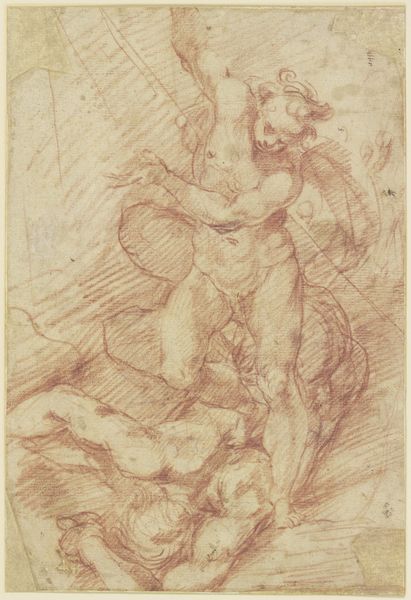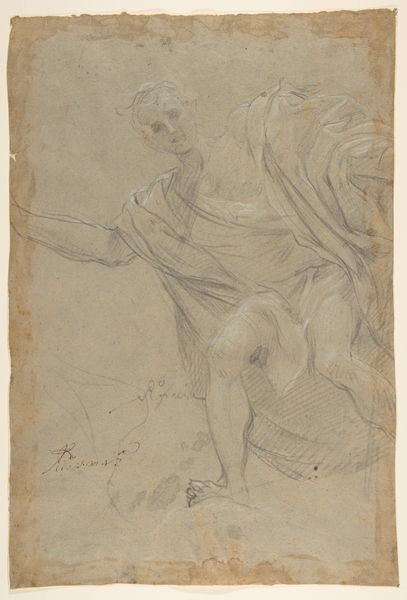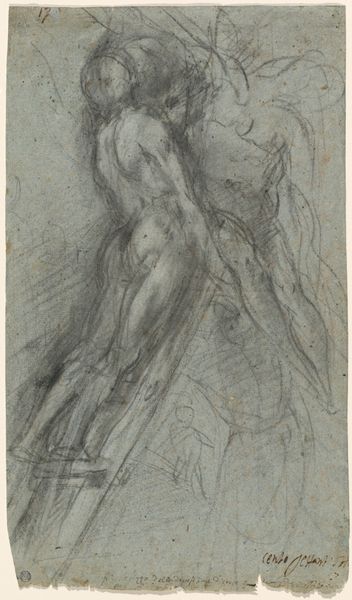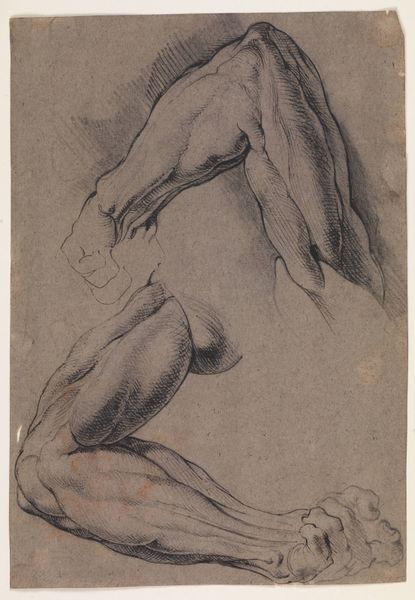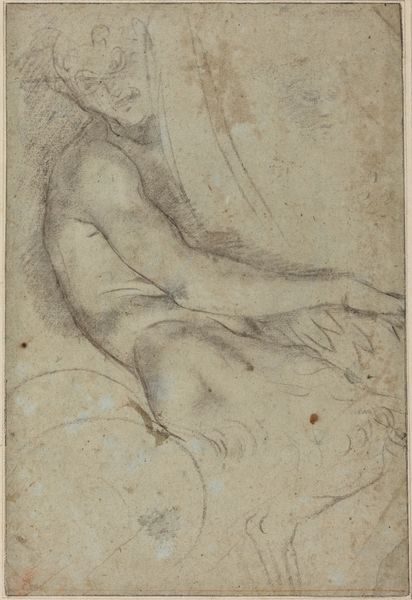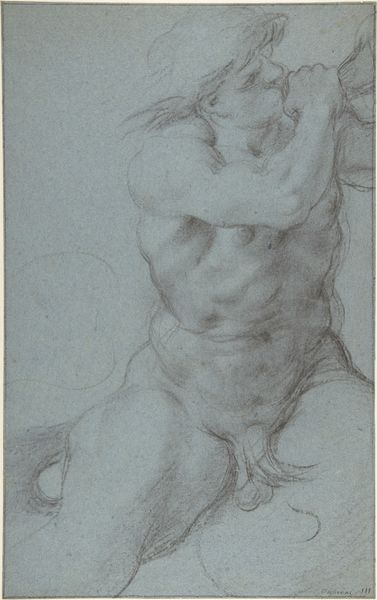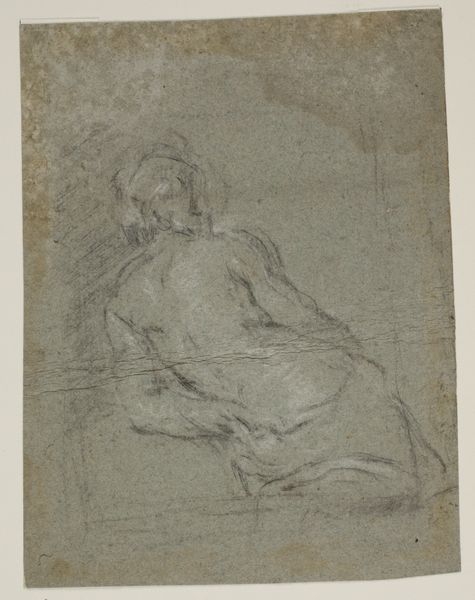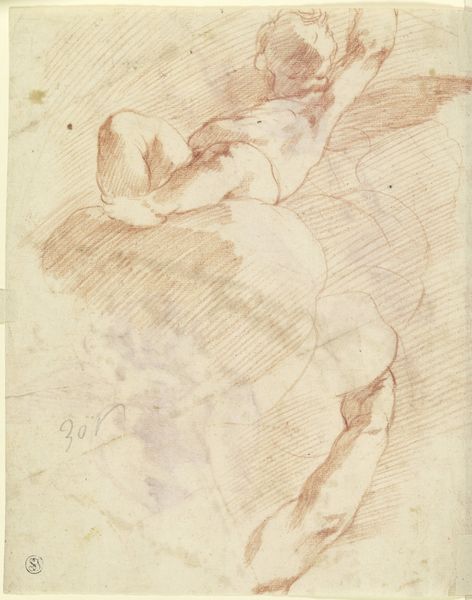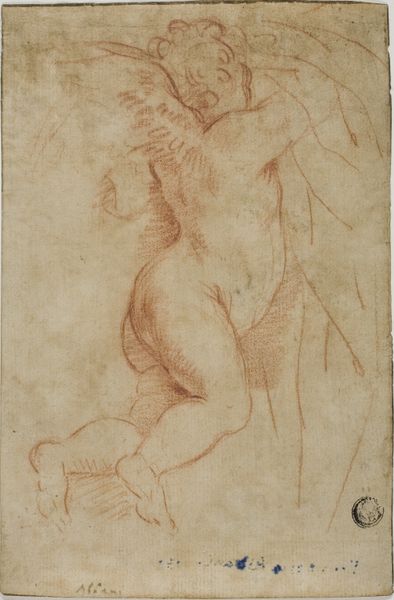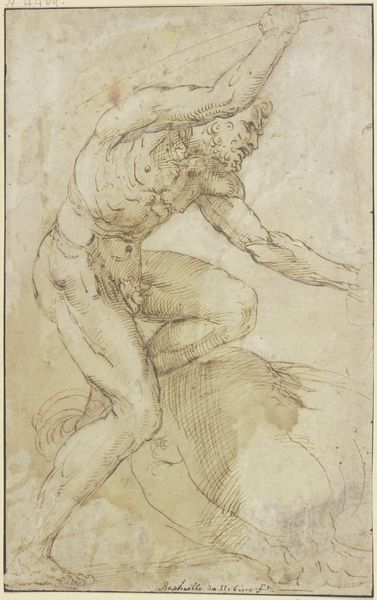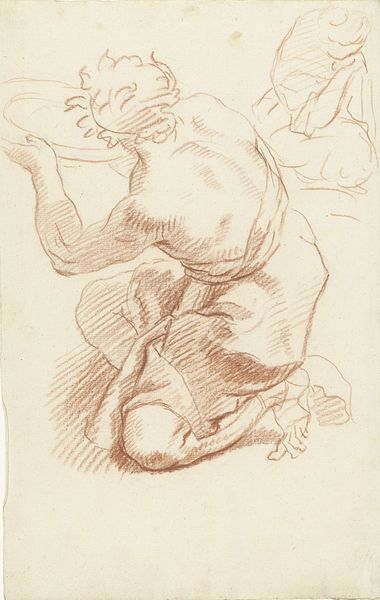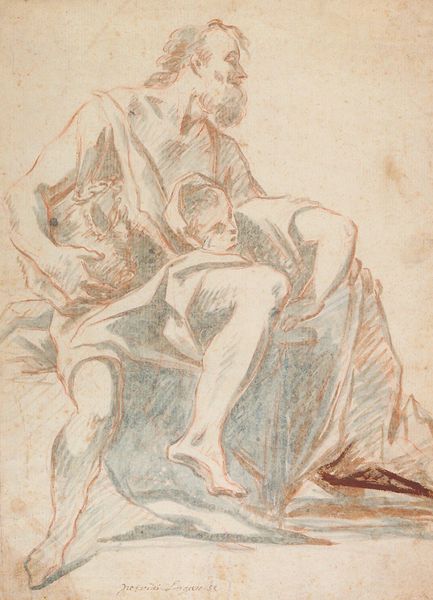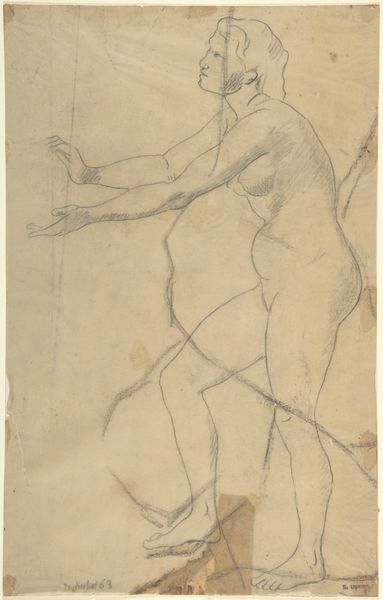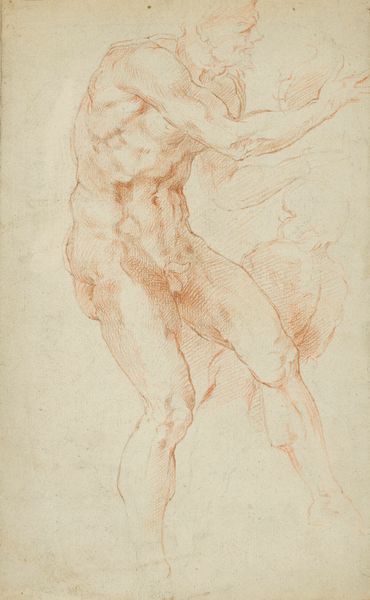
Studies of a Seated Nude Male Figure 1597 - 1607
0:00
0:00
drawing, pencil
#
drawing
#
figuration
#
11_renaissance
#
pencil
#
academic-art
#
italian-renaissance
#
nude
Dimensions: 6 1/16 x 4 5/16in. (15.4 x 11cm)
Copyright: Public Domain
Curator: At first glance, the pencil drawing titled "Studies of a Seated Nude Male Figure," created between 1597 and 1607 by Giulio Cesare Procaccini, conveys a certain melancholic grace, don't you think? Editor: Absolutely. There’s a subdued quality. I notice immediately the cross-hatching and the emphasis on light and shadow. The artist seems particularly invested in the modeling of musculature. Curator: Procaccini was, indeed, interested in rendering the ideal human form, informed, as many artists of the Italian Renaissance were, by classical ideals. Notice the repeated figure; its presence evokes contemplation—as if Procaccini is showing the layers of his own perception and construction of the model through iterations of the same image. Editor: Interesting, I'm drawn to how the overlapping figures disrupt any singular point of view. Is that a symbol, perhaps, of the multiplicity of human nature itself? Curator: That could be a valid interpretation. The nude figure throughout history often signifies both vulnerability and potential, Adam before the Fall, you might say, embodying primal innocence. Furthermore, the Renaissance emphasis on the individual ties into this exploration of identity through art. Editor: From a formal point of view, the loose and flowing lines are more evocative than prescriptive, allowing a freedom of reading. The blueness of the paper also infuses the whole image with a kind of calm...almost an indifference to drama. Curator: And despite being unfinished, perhaps that incomplete quality emphasizes our shared journey of construction of what we believe of others and ourselves, mirroring life's ever-evolving form? The very fact that these figures are Studies seems appropriate for their incompleteness and the suggestion of constant evolution. Editor: A meditation in line, tone, and paper then; very well put. Thank you. Curator: Thank you. Hopefully, this glimpse into Procaccini's creative process will spur a wider consideration of form and feeling in Renaissance drawing.
Comments
No comments
Be the first to comment and join the conversation on the ultimate creative platform.
